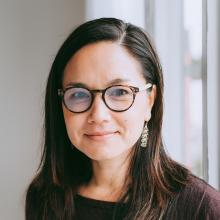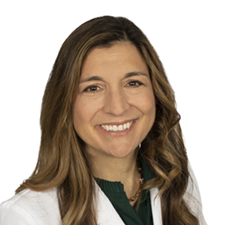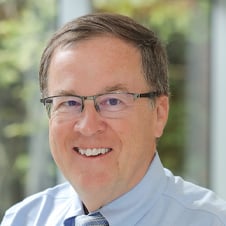Within the past two years, the national physician burnout rate has fallen from record-high pandemic levels. Yet with one in two physicians still reporting burnout symptoms, it is clear that much more still needs to be done to enhance professional fulfillment and improve well-being, and organizations are stepping up to the challenge.
That is because amplifying and activating your health care organization’s commitment to bringing the joy back to medicine benefits your bottom line while boosting physician recruitment and retention. And more joy in medicine means fewer physicians leaving their practice or medicine altogether.
One great way for health systems and organizations to tackle physician burnout is to take part in the AMA Joy in Medicine™ Health System Recognition Program, which is an initiative that offers a framework that provides a strategic pathway and a community of leaders to foster and accelerate well-being efforts. In 2023, 72 health systems, hospitals and medical groups were recognized for their active dedication to physician well-being.
That is an increase from the 28 organizations in 2022 who all earned bronze recognition. This year’s recognition represents the outstanding efforts these organizations have initiated to address the systemic causes of physician burnout in areas including commitment, assessment, leadership, teamwork, peer support and practice-environment efficiency.
By following the program’s framework, Bayhealth, Geisinger Health System and Washington Permanente Medical Group—all members of the AMA Health System Program—received recognition for their efforts. And other health systems can do the same.
The AMA Health System Program partners with organizations on an even deeper level, tailoring enterprise solutions to equip leadership, physicians and care teams with resources to help drive the future of medicine. Learn more.
In a webinar hosted by Becker’s Hospital Review, leaders from these health systems discussed how they have navigated organizational well-being efforts within their own environment and how others can do the same. They are:
- Mary Wierusz, MD, a family physician and chief wellness officer for Washington Permanente Medical Group in Seattle.
- Thomas E. Vaughan, MD, a radiologist and chief wellness officer at Bayhealth—a nonprofit health system with more than 4,000 employees and 400 physicians in Central and Southern Delaware.
- Susan Parisi, MD, an ob-gyn and chief wellness officer for Geisinger—a health system with about 24,000 employees and 1,600 physicians in Central Pennsylvania.
Leaning into measurement
“We started working with the Mini-Z a couple of years ago as I really advocated for it to be a validated, actionable assessment that would allow us to identify certain clinics or service lines that were having particular challenges and really focus our interventions on their needs,” Dr. Wierusz said. “It also allows us to identify the groups that are doing well and learn from what’s working with those teams—whether it be their local leader or something that they’re doing with teamwork, community building or workflow.”
The measurement piece has been “important for us advocating for certain needs at the organizational level to both do the deep dive at the team level, but then also looking at what across the board do we need to really advocate with leaders as far as staffing, scheduling, teamwork, autonomy, flexibility,” she said.
Measurement “was a quick win,” Dr. Parisi said. “I was hearing a lot and getting a lot of qualitative data, but I really needed to have that baseline to say this is where we’re at right now to know where we needed to go and where we needed to invest resources.”
“It really helps to point you in the right direction,” she added. “It’s like a compass to get us going in the right direction so that we can do a little deeper dive with those focus groups and say, ‘What’s really going on here?’”
While the clinical teams that had the highest stress and most burnout were not surprising, measuring has allowed “us to target some things that are really big, difficult issues within the system, which you are trying to change,” such as the high burnout rates of women physicians,” Dr. Vaughan said. Also, “the survey … is good as an educational tool for both medical staff and administration—what you measure is what you’re going to fix.”
Reducing physician burnout is a critical component of the AMA Recovery Plan for America’s Physicians.
Far too many American physicians experience burnout. That's why the AMA develops resources that prioritize well-being and highlight workflow changes so physicians can focus on what matters—patient care.
Working with leadership
“We have a lot of programming to support the individual and the team, but also to be able to address the longer-term organizational changes, having direct contact with other senior leaders and executive leaders really allows that wellness lens for them to apply and really embed it within the culture,” Dr. Wierusz said.
“Whether that's me being able to meet regularly with our executive medical director of operations or our CMIO [chief medical information officer] or … our board members, they're really learning more how their work makes a difference to clinician well-being,” she added. “It really takes all of us throughout the organization to make those broader changes.”
Meeting, educating and listening
While Geisinger already had leadership buy-in before Dr. Parisi stepped into the inaugural role of chief wellness officer (CWO), the challenge was that not everyone understands what organizational well-being means.
“I had many leaders who were in support and understood what that means, but there is still that learning curve in terms of educating a lot of the organization as an inaugural CWO,” Dr. Parisi said. But getting to have those conversations and meeting a lot of individuals, “gave me the opportunity to meet with a lot of leaders and a lot of frontline staff in the first year and just share what it meant to be a CWO, what my job was and also to do a lot of that listening that needed to happen to understand what was going on at Geisinger.”
At Bayhealth, “even though I’ve been there a long time, when I started the official position, I met with about 30 of the senior leaders in the organization to educate them on what’s going on and also see who is going to be the ones who are going to be the best to collaborate with,” Dr. Vaughan said. That’s “because collaboration is about the most important thing you can do to learn who might be more resistant or siloed.”
Collaborating to find success
“In order to drive this work forward, we need as a group to collaborate nationally as well. And that’s where the AMA is incredibly helpful in just even bringing me together with my colleagues … and listening to what they’re doing is so incredibly helpful for me,” Dr. Parisi said. “Lean into others outside of your organization because it does take a very large village to do this work and there are really good people out there.”
“The AMA team has been incredibly helpful, beneficial, just the best group of people to do this with,” Dr. Vaughan said. “We’ve done three surveys now and to do a survey with the AMA team brings the joy back in medicine.”






